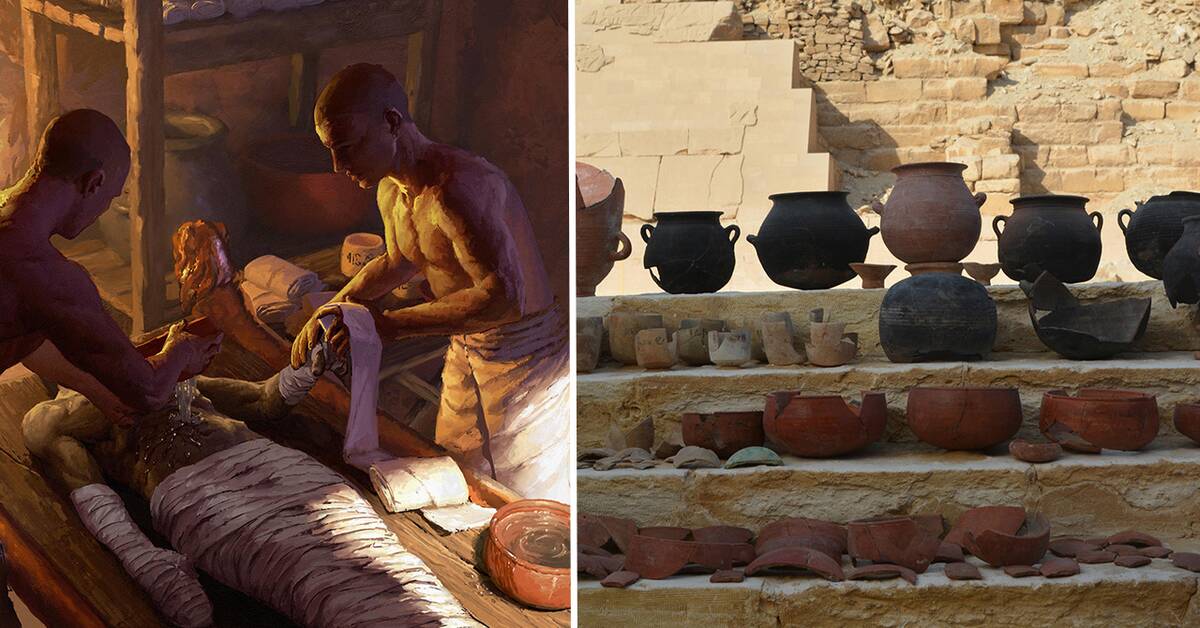The workshop was located in the ancient burial city of Saqqara, south of Cairo.
The archaeologists found over 100 different pots used during the embalming process.
- People have previously seen depictions of embalming workshops on tomb walls and guessed where they would have been.
And then you find this one, which is largely underground, says Sofia Häggman who is an Egyptologist at the Mediterranean Museum
Become a divine being
Embalming was a lengthy process in which the dead would be prepared to leave the mortal life and be transformed into a divine being.
Among other things, they removed the entrails and the brain and treated the body with salts.
The new find now provides completely new insights into how the mummification process took place.
- We have analyzed around 30 ceramic vessels that were excavated from the embalming workshop, says archaeologist Maxime Rageot, one of the researchers behind the study.
Inscriptions on the pots
Remains of juniper, pistachio, cypress, cedar wood, animal fats and vegetable oils have been found in the vessels.
There were also inscriptions carved into the vessels with detailed instructions on how different herbal mixtures should be applied to different parts of the body to achieve the best results.
- We have also found precious substances that come from trees that do not grow in Egypt but only in tropical rainforests in Asia, says Maxime Rageot.
The study, which is now published in the journal Nature, provides a much more detailed picture of the complicated work of embalming the dead than was previously known.
It also shows that the Egyptians carried out long-distance trade, including with Asia, as early as 3,000 years ago.

